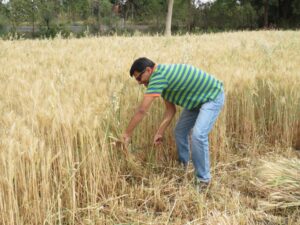Small organizations, NGOs, and communities working in the conservation, livelihoods, wildlife, and climate action space have one major problem – the high cost of creating digital solutions and the availability of talented professionals for creating them. Also, problems with raising funding for projects are even more challenging.
Amit Banka understands these problems better than anyone else. He is a conservationist at heart and has the brains of an entrepreneur and the tact of a business executive. He put these together to start WeNaturalists in 2019 to improve the chances of success for people working on nature conservation and regeneration. Apart from being an entrepreneur, Amit is also an ardent nature lover, wilderness explorer, and bird photographer.
WeNaturalists is already a hit. It has over 12,000 users from 100 countries and its platform has been used to record over 15 million observations of nature.
Benedict Paramanand, the founder of Sustainability Next magazine, recently sat down with Amit Banka, to chat about the workings, aspirations, and challenges of the platform. Edited Excerpts:
From the Conceptualization of WeNaturalists to the present, what have you learned?
The journey from 2019 to now has been full of discoveries. Switching gears from the corporate mindset to the green space posed unique challenges. The internet doesn’t have all the answers when it comes to turning environmental services into profitable ventures.
We relied heavily on insights from pioneers like Bittu Sehgal and National Geographic. But what truly anchored our journey was a passion for nature, which I personally cultivated through books and photography. We have strived to make nature a mainstream topic rather than just a weekend hobby for corporates.
The line between philanthropy and protecting nature seems to be blurred. People often view environmental services as charitable actions. How do you view this interplay?
Having led the Swades Foundation, a non-profit, I can draw clear distinctions between charitable endeavors and sustainable businesses. While both have their merits, businesses in the green space can have a stable and more profound impact due to their collaborative nature and the involvement of multiple stakeholders. It’s crucial to view the ecosystem in its entirety to harness its potential.
It’s evident you’re channeling the passion of those in the natural world into a viable business. How do you ensure empowerment and profitability coexist?
Our approach is twofold. Firstly, with the impending urgency to address carbon footprints and sustainability, there’s a massive workforce eager to make a difference. We provide a digital space where organizations, be it grassroots NGOs or global entities like UNICEF, can run projects and document their progress using real-time data.
Secondly, our tools are designed to help these entities attain self-sustenance. By fostering self-reliant communities, we not only elevate their impact but also ensure our platform’s profitability.
Edited by J Shiruti











